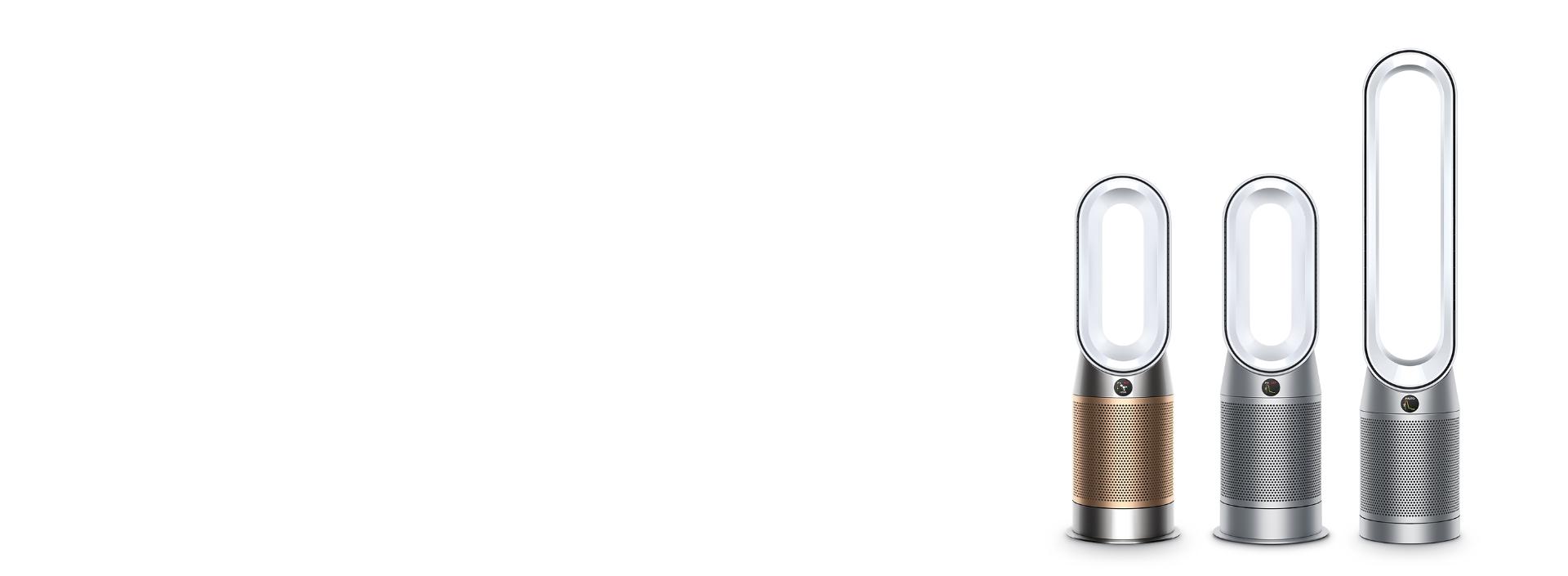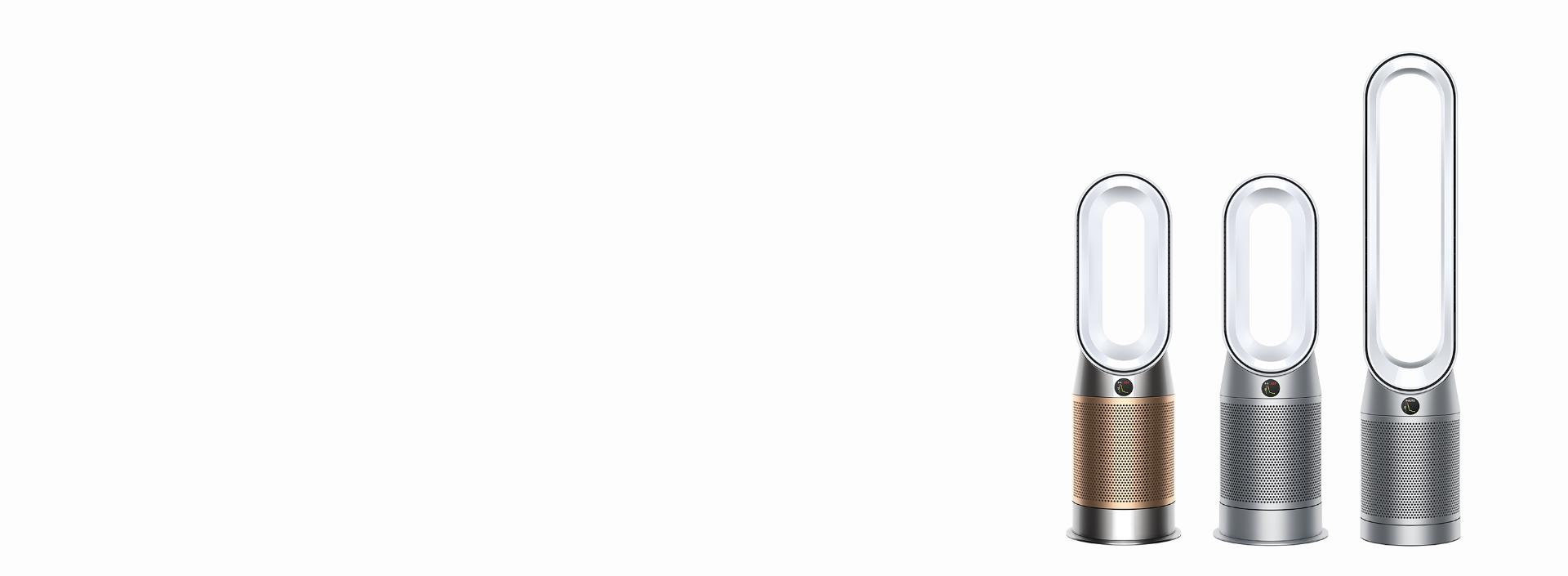
How do air purifiers work?
Pollution and particulate matter affect us every day. While controlling what we breathe outside is harder, we can protect the wellbeing and health of our families when indoors. An air purifier is your best defence against pollutants, which are created both inside the home and brought in from outside. So – what is an air purifier? And what does an air purifier do to improve the quality of the air we breathe? Ahead, see the different air purifier functions alongside the varying gases, bacteria and particles they eliminate.
18th November 2022
What is an air purifier?
An air purifier functions in two main ways. First, dirty air is drawn into varying filters, which capture and trap differently sized particles alongside gases like VOCs. The purified air is then continuously projected around your room. Only a Dyson purifier contains Air Multiplier™ technology, which draws in litres of air with airborne pollutants and projects the purified around throughout the room.
An air purifier engineered with HEPA H13 and activated carbon filters can work effectively against pollens, fine particles, Volatile Organic Compounds (VOCs), viruses and bacteria.
How do air purifiers work?
Given that most air pollution is invisible, you might be wondering ‘do air purifiers actually work?’. Air purifiers are designed precisely to tackle the health risks we can’t see. While many purifiers are engineered with a filter and a fan, Dyson’s purifier technology can actually detect pollutants in the air, before filtering them out in stages.
A Dyson air purifier has different layers of filtration to create the cleanest air possible.
- Whole-machine HEPA H134 filtration system captures dust, pollen bacteria and ultrafine particles the size of 0.1 microns.1
- An activated carbon filter removes gases and odours which emit from common household items, cleaning sprays and cooking appliances.
- The Dyson Purifier Hot+Cool™ Formaldehyde contains a selective catalytic oxidisation filter, which captures and destroys formaldehyde.2
Air purifier functions
Now that we know how air purifiers work, let’s deep dive into the potential harms that a Dyson purifier can eliminate. Indoor air consists of a combination of pollutants – each with their own sources and potential dangers. Many of us only think about outdoor pollution, but Dyson’s research into air science reveals the chemical and bio pollutants that build up in homes.
-
Volatile Organic Compounds (VOCs)
VOCs are made up of carbon, hydrogen and sometimes oxygen. Potentially harmful compounds, VOCs emit from common items in the home – like hairspray and other personal care products, candles, and cleaning products. Household materials like paints can also give off VOCs. Exposure to them can affect health in a variety of ways, including irritation to nose, eyes and throat.
-
Bacteria and viruses
Bacteria and viruses can be found all over the home. The Covid-19 pandemic has raised our awareness of and concern for the presence of viruses in indoor spaces. Germs from a sneeze can travel up to six metres, and the distance with which bacteria and viruses can travel will be a surprise to many.
-
Formaldehyde
A colourless gas which is almost always present in homes. Formaldehyde can be released from materials like plywood and fibreboard, insulation, paint, wallpaper, varnishes and household cleaning sprays. High level exposure can have adverse effects on health3, but the size (500 times smaller than 0.1 microns) of formaldehyde makes it difficult to capture.
-
Dust
Dyson’s Global Dust Study reveals the components of dust, and the cleaning habits of people around the world in responding to it. Dust combines biological components with microplastics, ranging in sizes from microscopic to visible build-ups.
-
Nitrogen dioxide
One of the more well-known pollutants, nitrogen dioxide is a reddish-brown gas which is released through gas appliances, open flames, wood burning stoves and cigarettes. A driving source of NO2 is fossil fuel combustion, which can enter homes through windows and ventilation.
-
Pollen
Particles produced by trees, flowers and grass. Though we often think of pollen in terms of the outdoors, infiltration into homes easily happens through open doors, windows, on pet hair and the soles of shoes. Trapping pollen is important, as it’s responsible for one of the most common seasonal allergies in the world.
-
Particulate matter
Categorised into different groups, particulate matter refers to extremely small solid particles and liquid droplets. ‘PM10’ particles like pollen and allergens are small enough to enter the lungs. PM2.5 are microscopic particles sourced from industrial emissions, bacteria and fungi. PM0/1 refers to unstable particles which can grow in size. Dyson air purifiers have been engineered to remove airborne particles – so you can breathe cleaner air. Learn more.
-
Mould spores
Unlike pollen which is seasonal, mould can occur in homes year-round. Mould refers to a group of fungi which grow into visible, web-like structures. The danger to home health results from the spores it releases, which travels through air. Mould spores can contribute to allergens. Dyson’s air purifier functions can assist in addressing this allergy-inducing filament.
Explore the Dyson difference
Dyson’s air purifiers demonstrate their work in real-time. Real-time reporting shows the pollutants sensed in the space, and the amount captured. Explore the separate features in the Dyson air purifier range, to see which model is right for you.

Now that you know how air purifiers work, read on to discover how to clean carpet effectively.
Press Contact
ANZ Press Office
Email: aupressoffice@dyson.com
Dyson Newsroom
The latest news from Dyson
1Tested for filtration efficiency at 0.1 microns (EN1822, ISO29463)
2Third party full machine testing based on GB/T 18801-2015 formaldehyde cumulative clean mass testing with continuous injection until plateau of formaldehyde CADR is achieved. Results may vary in practice.
3Government of South Australian, SA Health, Formaldehyde.
 Call us
Call us Email us
Email us Request a meeting
Request a meeting Live chat
Live chat